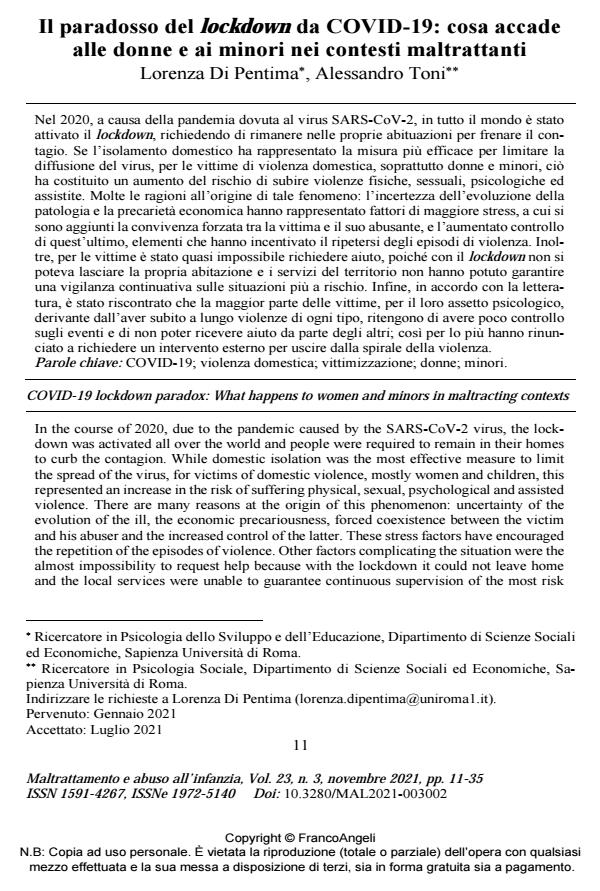COVID-19 lockdown paradox: What happens to women and minors in maltracting contexts
Journal title MALTRATTAMENTO E ABUSO ALL’INFANZIA
Author/s Lorenza Di Pentima, Alessandro Toni
Publishing Year 2021 Issue 2021/3
Language Italian Pages 25 P. 11-35 File size 266 KB
DOI 10.3280/MAL2021-003002
DOI is like a bar code for intellectual property: to have more infomation
click here
Below, you can see the article first page
If you want to buy this article in PDF format, you can do it, following the instructions to buy download credits

FrancoAngeli is member of Publishers International Linking Association, Inc (PILA), a not-for-profit association which run the CrossRef service enabling links to and from online scholarly content.
In the course of 2020, due to the pandemic caused by the SARS-CoV-2 virus, the lock-down was activated all over the world and people were required to remain in their homes to curb the contagion. While domestic isolation was the most effective measure to limit the spread of the virus, for victims of domestic violence, mostly women and children, this rep-resented an increase in the risk of suffering physical, sexual, psychological and assisted violence. There are many reasons at the origin of this phenomenon: uncertainty of the evo-lution of the ill, the economic precariousness, forced coexistence between the victim and his abuser and the increased control of the latter. These stress factors have encouraged the repetition of the episodes of violence. Other factors complicating the situation were the al-most impossibility to request help because with the lockdown it could not leave home and the local services were unable to guarantee continuous supervision of the most risk situations. Furthermore, according to the literature, most of the victims (due to their psycho-logical structure, resulting from having suffered violence of all kinds for a long time) believe to have little control over events and they cannot receive help from others; so mostly they re-nounce to require external intervention to get out of the spiral of violence.
Keywords: COVID-19; domestic violence; victimization; women; children.
Lorenza Di Pentima, Alessandro Toni, Il paradosso del lockdown da COVID-19: cosa accade alle donne e ai minori nei contesti maltrattanti in "MALTRATTAMENTO E ABUSO ALL’INFANZIA" 3/2021, pp 11-35, DOI: 10.3280/MAL2021-003002